#Laszlo Gyorgy
Text
SON OF THE WHITE MARE:
Warrior brothers
Search for kidnapped princesses
A dreamlike fable
youtube
#son of the white mare#random richards#poem#haiku#poetry#haiku poem#poets on tumblr#haiku poetry#haiku form#poetic#feherkofiam#gyorgy cserhalmi#Vera pap#Gyula Szabo#Ferenc Szalma#Marcell Jankovics#Laszlo Gyorgy#Mari Szemes#Szabolcs Toth#Youtube
0 notes
Text
duhhuh bluhhh im.tje Pensive Thinker now. you'reee all gonna get massive blocks of laszlo krasznahorkai transcriptionsss copypasted onto your dash .y ou're gonna learn to fucking love gyorgy korin .
My Blog's Aesthetic Isbs Gonna Be So Melancholic and Wizened Bitch U Wont Kno What *HIT* u
im talking WHETSTONES
Bitch
9 notes
·
View notes
Photo
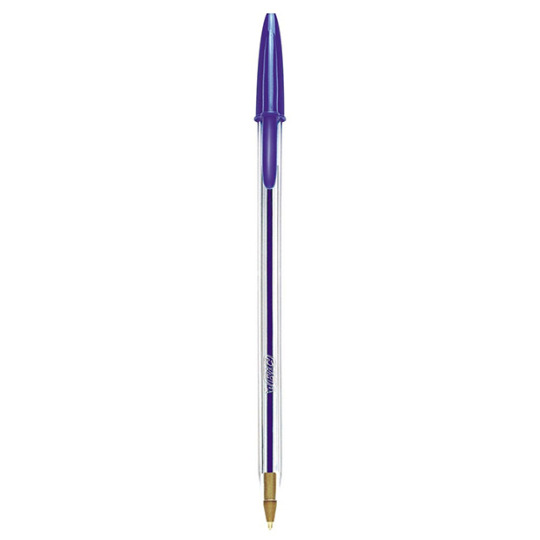
em 1943 os irmãos húngaros laszlo e gyorgy biro se mudaram para a argentina onde fundaram a biro pens da argentina. em 1950, com a patente comprada por um barão francês, surge no mercado a bic cristal como conhecemos até hoje
9 notes
·
View notes
Text
French Mountain Trooper & Waffen SS Half-Truck Crew
Bodi’s new figure collection includes two figures. The figures are both cast in resin and 1/35 scale.
TB-35219 Waffen SS half-truck crewman for Sd.Kfz. 251 (WW II) #2
Cast in resin.
The French Mountain Trooper, World War II (TB-35211)
by Sandor Harsanyi, box art painted by Laszlo Gyorgy.
Cast in resin.
Available from:
Design
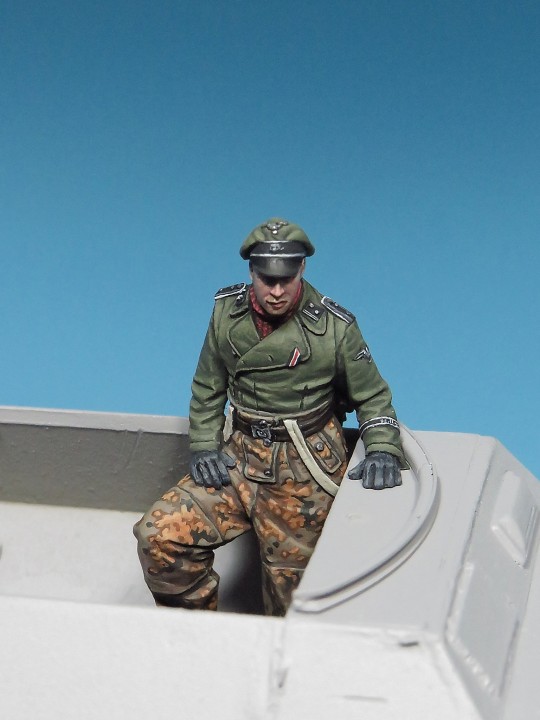
View On WordPress
0 notes
Text
Shrewd political ploy or justice served? Just why did Hungary’s president pardon Gyorgy Budahazy, a notorious extremist convicted of terrorism.
Upon his unexpected release from prison, Gyorgy Budahazy, a notorious far-right activist, jumped on a horse and rode away triumphantly – straight to the nearest pub. What seemed like a scene out of a B western movie was political reality in Hungary on April 27, when Budahazy was liberated by a presidential pardon granted by Katalin Novak, Hungary’s first female president.
The 44-year-old Novak, who was elected by the Fidesz-dominated parliament last year and is seen as a loyal servant of Prime Minister Viktor Orban, argued that Pope Francis’s Apostolic visit to Hungary “presented a special opportunity to exercise the right of pardon”.
But most people in Hungary wondered why exactly Budahazy was chosen to be the lucky recipient.
The 53-year-old far-right activist was convicted of terrorism and for a range of other violent offences committed between 2007 and 2009, during the Socialist-Liberal government of Ferenc Gyurcsany. Today, Gyurcsany is the leader of the main opposition Democratic Coalition party and practically Orban’s only real political rival in Hungary.
Budahazy and members of his “Hunnia” movement attacked the offices of the then-governing parties, and threw Molotov cocktails and explosives at the homes of government politicians. A nightclub and two gay bars were also set on fire. No one was injured in the attacks except for Socialist politician Sandor Csintalan, who was badly beaten up by four masked men in a garage close to his home.
Budahazy was first arrested in 2009, but various court cases dragged on for years until eventually he was sentenced in 2022 to 17 years in prison, which was then cut to six years in March. Counting time already spent behind bars, he would have been released in 2025. Instead, he was given a hero’s welcome at the May Day celebrations of the far-right Mi Hazank (Our Homeland) party, which embraced him as a new icon of the far-right.
Budahazy appeared wearing a T-shirt with the slogan: “I am a patriot not a terrorist”. He gave a brief speech, thanked the president for the pardon, and called his miraculous release “a huge victory for all on the nationalist side”, while also praising the Fidesz-led government for its “pragmatic” politics.
Laszlo Toroczkai, chairman of Mi Hazank and an old mucker from Budahazy’s Hunnia days, declared happily that: “Finally, all patriots are free.”
Splitting the far-right vote
Some wonder if the presidential pardon is another shrewd political ploy by Orban’s Fidesz party to split the far-right vote and create a rival in Mi Hazank to party leader Toroczkai.
Mi Hazank, which originally capitalised on anti-vaccination feelings amongst voters, put in a surprisingly strong showing at the 2022 parliamentary election by winning 6 per cent of the vote. After the breakup of the united opposition, it has become the third political force after Fidesz and the leftist Liberal-Democratic coalition. Yet both are still a far cry from becoming any serious challenge to Fidesz, which won the election by a landslide.
Far-right expert Abel Bojar, research director at the 21 Research Center, tells BIRN that so far relations remain cordial between the two accomplices who fought side by side in the 2000s against the previous government. But there is clearly potential for Fidesz to draw some voters away.
“Budahazy primarily appeals to the voters of the old militant Jobbik,” Bojar says, referring to Hungary’s traditional far-right party which has since become moderate conservative. “The nationalist radicals who don’t see any problem with anti-Roma beliefs, anti-Semitism or anti-EU ideas.”
“One motivation for the government could be to lure these nationalist-radical voters to Fidesz, to prove that the governing party shares a certain affinity with them,” Bojar argues.
Budahazy’s release prompted sharp rebukes from the liberal opposition, especially from those who were once targeted by his group. Csintalan, who was beaten up by a masked gang, called the release “fascism, glorified” and that “invoking the Holy Father for such an immoral and scandalous decision is sacrilege.”
Istvan Hiller, a former Socialist minister of education whose house was shot at in 2006, recalled the cold sweat he felt when he saw his wife’s jackets stored in a wardrobe with bullet holes in them. “These people committed terrorism, they wanted us to be afraid,” Hiller said on ATV.
He wondered what effect the presidential pardon could have on future perpetrators when they see that “a terrorist act can be pardoned”.
Yet far-right expert Bojar does not think violence will return to the streets anytime soon. “For those who sympathise with Budahazy, he has never been a terrorist but a public figure who was unjustly sent to prison,” he says.
For many – and perhaps another motive behind the Fidesz government’s decision – committing violent acts against the “chaotic Socialist-Liberal government” is considered no great sin. Indeed, as time passes, Fidesz rarely misses an opportunity to remind voters about the previous government’s time in power and to discourage them from ever giving those politicians another stint in office.
Budahazy, a mechanical engineer by training and an enthusiast of ancient Hungarian traditions, rose to political prominence in his 30s. He started by organising street protests against the 1920 Treaty of Trianon that ended the Kingdom of Hungary and stripped the country of two-thirds of its territory and a third of its population in 1920, regarded by many Hungarians as an unjust settlement.
In the 2000s, he gained notoriety as a participant in radical demonstrations, staging protests against the country’s EU accession and launching a “national movement” to topple the Gyurcsany government.
His sister, Edda, is also a well-known anti-abortion and anti-LGBT activist.
Although Budahazy is legally banned from elected office and cannot vote because of his conviction, he has already made it clear that he will not ride off into the sunset and withdraw from public life.
1 note
·
View note
Text
Daftar Top Skor Piala Dunia Sejak Tahun 1930-2018
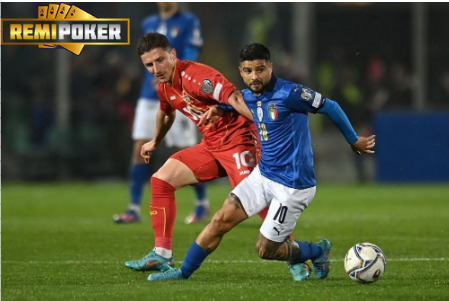
1. Top Skor Piala Dunia 1930
8 gol - Guillermo Stabile (Argentina)
5 gol - Pedro Cea (Uruguay)
4 gol - Bert Patenaude (Amerika Serikat)
2. Top Skor Piala Dunia 1934
5 gol - Oldrich Nejedly (Cekoslovakia)
4 gol - Angelo Schiavio (Italia) dan Edmund Conen (Jerman)
3 gol - Raimundo Orsi (Italia) dan Leopold Kielholz (Swiss)
3. Top Skor Piala Dunia 1938
7 gol - Leonidas (Brasil)
5 gol - Silvio Piola (Italia), Gyula Zsengeller (Hungaria), dan Gyorgy Sarosi (Hungaria)
4 gol - Gino Colaussi (Italia) dan Ernest Wilimowski (Polandia)
4. Top Skor Piala Dunia 1950 REMIPOKERGG
8 gol - Ademir de Menez (Brasil)
5 gol - Oscar Miguez (Uruguay)
4 gol - Telmo Zarra (Spanyol), Estanislau Basora (Spanyol), Chico (Brasil), dan Alcides Ghiggia (Uruguay)
5. Top Skor Piala Dunia 1954
11 gol - Sandor Kocsis (Hungaria)
6 gol - Josef Hugi (Swiss), Max Morlock (Jerman Barat), dan Erich Probst (Austria)
4 gol - Ferenc Puskas (Hungaria), Nandor Hidegkuti (Hungaria), Helmut Rahn (Jerman Barat), Hans Schafer (Jerman Barat), Robert Ballaman (Swiss), Carlos Borges (Uruguay), dan Ottmar Walter (Jerman Barat)
6. Top Skor Piala Dunia 1958
13 gol - Just Fontaine (Prancis)
6 gol - Pele (Brasil) dan Helmut Rahn (Jerman Barat)
5 gol - Vava (Brasil) dan Peter McParland (Irlandia Utara)
7. Top Skor Piala Dunia 1962
4 gol - Garrincha (Brasil), Vava (Brasil), Valentin Ivanov (Uni Soviet), Florian Albert (Hungaria), Drazan Jerkovic (Yugoslavia), dan Leonel Sanchez (Chile)
3 gol - Amarildo (Brasil), Adolf Scherer (Cekoslovakia), Lajos Tichy (Hungaria), dan Milan Galic (Yugoslavia)
8. Top Skor Piala Dunia 1966
9 gol - Eusébio (Portugal)
6 gol - Helmut Haller (Jerman Barat)
4 gol - Geoff Hurst (Inggris), Franz Beckenbauer (Jerman Barat), Ferenc Bene (Hungaria), dan Valeriy Porkujan (Uni Soviet)
9. Top Skor Piala Dunia 1970
10 gol - Gerd Muller (Jerman Barat)
7 gol - Jairzinho (Brasil)
5 gol - Teofilo Cubillas (Peru)
4 gol - Pele (Brasil) dan Anatoliy Byshovets (Uni Soviet)
10. Top Skor Piala Dunia 1974
7 gol - Grzegorz Lato (Polandia)
5 gol - Johan Neeskens (Belanda) dan Andrzej Szarmach (Polandia)
4 gol - Johnny Rep (Belanda), Gerd Muller (Jerman Barat), dan Ralf Edstrom (Swedia)
LANJUTKAN MEMBACA ARTIKEL DI BAWAH
Editor’s Picks
4 Grup Neraka Piala Dunia 2022, Siap Tebar Ancaman
Jadwal 4 Wakil Garuda Di Perempat Final Australia Open 2022
Pembalap MotoGP Yang Paling Banyak Terjatuh Pada 2022, Siapa?
11. Top Skor Piala Dunia 1978 303LAPAK PUSAT
6 gol - Mario Kempes (Argentina)
5 gol - Teofilo Cubillas (Peru) dan Rob Rensenbrink (Belanda)
4 gol - Leopoldo Luque (Argentina) dan Hans Krankl (Austria)
3 gol - Paolo Rossi (Italia), Johnny Rep (Belanda), Dirceu (Brasil), Roberto Dinamite (Brasil) dan Karl-Heinz Rummenigge (Jerman Barat)
12. Top Skor Piala Dunia 1982
6 gol - Paolo Rossi (Italia)
5 gol - Karl-Heinz Rummenigge (Jerman Barat)
4 gol - Zico (Brasil) dan Zbigniew Boniek (Polandia)
3 gol - Alain Giresse (Prancis), Falcao (Brasil), Laszlo Kiss (Hungaria), dan Gary Armstrong (Irlandia Utara)
13. Top Skor Piala Dunia 1986
6 gol - Gary Lineker (Inggris)
5 gol - Diego Maradona (Argentina), Emilio Butragueno (Spanyol), dan Careca (Brasil)
4 gol - Alessandro Altobelli (Italia), Preben Elkjaer (Denmark), Igor Belanov (Uni Soviet), dan Jorge Valdano (Argentina)
14. Top Skor Piala Dunia 1990
6 gol - Salvatore Schillaci (Italia)
5 gol - Thomas Skuhravy (Cekoslovakia)
4 gol - Roger Milla (Kamerun)
15. Top Skor Piala Dunia 1994
6 gol - Hristo Stoichkov (Bulgaria) dan Oleg Salenko (Rusia)
5 gol - Romario (Brasil), Kennet Andersson (Swedia), Roberto Baggio (Italia), dan Jurgen Klinsmann (Jerman)
4 gol - Gabriel Batistuta (Argentina), Martin Dahlin (Swedia), dan Florin Răducioiu (Rumania)
16. Top Skor Piala Dunia 1998
6 gol - Davor Suker (Kroasia)
5 gol - Gabriel Batistuta (Argentina) dan Christian Vieri (Italia)
4 gol - Ronaldo (Brasil), Marcelo Salas (Chile), dan Luis Hernandez (Meksiko)
17. Top Skor Piala Dunia 2002
8 gol - Ronaldo Nazario (Brasil)
5 gol - Miroslav Klose (Jerman) dan Rivaldo (Brasil)
4 gol - Christian Vieri (Italia) dan Jon Dahl Tomasson (Denmark)
18. Top Skor Piala Dunia 2006
5 gol - Miroslav Klose (Jerman)
3 gol - Hernan Crespo (Argentina), Ronaldo Nazario (Brasil), Thierry Henry (Prancis), Zinedine Zidane (Prancis), Fernando Torres (Spanyol), David Villa (Spanyol), Maxi Rodriguez (Argentina), dan Lukas Podolski (Jerman)
19. Top Skor Piala Dunia 2010
5 gol - Thomas Muller (Jerman), David Villa (Spanyol), Wesley Sneijder (Belanda), dan Diego Forlan (Uruguay)
4 gol - Gonzalo Higuain (Argentina), Miroslav Klose (Jerman), dan Robert Vittek (Slovakia)
3 gol - Luis Fabiano (Brasil), Asamoah Gyan (Ghana), Landon Donovan (Amerika Serikat), dan Luis Suárez (Uruguay)
20. Top Skor Piala Dunia 2014
6 gol - James Rodriguez (Kolombia)
5 gol - Thomas Muller (Jerman)
4 gol - Neymar (Brasil), Lionel Messi (Argentina), dan Robin van Persie (Belanda)
3 gol - Arjen Robben (Belanda), Karim Benzema (Prancis), Enner Valencia (Ekuador), Andre Schurrle (Jerman), dan Xherdan Shaqiri (Swiss)
21. Top Skor Piala Dunia 2018
6 gol - Harry Kane (Inggris)
4 gol - Antoine Griezmann (Prancis), Romelu Lukaku (Belgia), Denis Cherysev (Rusia), Kylian Mbappe (Prancis), dan Cristiano Ronaldo (Portugal)
3 gol - Mario Mandzukic (Kroasia), Eden Hazard (Belgia), Edinson Cavani (Uruguay), Artem Dzyuba (Rusia), Ivan Perisic (Kroasia), Diego Costa (Spanyol), dan Yerry Mina (Kolombia)
22. Top Skor Piala Dunia 2022 MAX WIN GACOR
5 gol - Lionel Messi (Argentina) dan Kylian Mbappe (Prancis)
4 gol - Julian Alvarez (Argentina) dan Olivier Giroud (Prancis)
3 gol - Cody Gakpo (Belanda), Richarlison(Brasil), Enner Valencia (Ekuador), Marcus Rashford (Inggris), Bukayo Saka (Inggris), Goncalo Ramos (Portugal) dan Alvaro Morata (Spanyol).
Itulah daftar lengkap top skor Piala Dunia dari masa ke masa sejak edisi tahun 1930 hingga 2022.
0 notes
Photo

June 10th is...
Ballpoint Pen Day - It recognizes the useful writing utensil and commemorates the anniversary of the patent filing on June 10, 1943. Before 1943, anyone who wanted to write a letter or scribble some notes on a piece of paper used a fountain pen or pencil. Now the dominant writing instrument, the ballpoint pen was originally conceived and developed as a cleaner and more reliable alternative to the quill and fountain pens. In earlier years, many attempts by inventors led to failed patents as their inventions did not deliver the ink evenly. They also had overflow and clogging issues. However, in June of 1943, the brothers Laszlo and Gyorgy Biro obtained their patent for the ballpoint pen, revolutionizing how many write letters and conduct business.
Black Cow Day - It recognizes an ice cream float beverage also known as a Root Beer Float. That’s right, the beverage made with rootbeer and vanilla ice cream was also called a Black Cow. It was originally made with vanilla ice cream but sometimes it’s made with chocolate ice cream or even plain cola flavor. Frank J. Wisner of Cripple Creek, Colorado, gets the credit for inventing the Black Cow way back in August of 1893.
Egg Roll Day - The egg roll began as a Chinese-American tradition that extended to Vietnamese immigrants reaching for the American Dream. These traditions grew from the unfailing dedication of families in chop suey palaces serving hungry workers. Restaurants across the country perfected their own versions of the egg roll with a variety of finely chopped ingredients – pork, shrimp, cabbage, onions, bamboo shoots, water chestnuts and seasonings. And it was all rolled up in a thin pastry wrap and deep-fried.
Farm Workers Day - A day to celebrate and be grateful for all the hard work that farmers do to keep fresh food coming. Vegetables, meat, herbs – the staples of your grocery bag all started out on a farm. It’s sometimes hard for us to remember how lucky we are to have access to fresh produce, and we are somewhat disconnected from the roots – literally – of our food when we see it all packaged up in the supermarkets. On Farm Workers Day, we are reminded to thank farmers for making it all possible.
Herbs And Spices Day - Herbs and spices have been used for many hundreds of years, and besides making our food delicious, each has its specific health benefits. Growing your own herbs and spices is a great way to add fresh variety to your food. Herbs raised in your home add an aromatic and natural fragrance to the air as well.
Iced Tea Day - Recipes for iced tea have been found dating back to the 1870s. The Buckeye Cookbook, published in 1876, and Housekeeping in Old Virginia, published in 1877, both contain iced tea recipes. It is believed, however, that iced tea started to appear in the United States in the 1860s and became widespread in the 1870s. During that time, hotels offered iced tea on their menus and railroad stations offered the beverage as well. In 1904, the beverage was introduced at the World’s Fair in St. Louis causing its popularity to explode.
Jerky Day - Jerky is essentially what happens when lean meat is put through the special process of soaking it in brine (salty water), and leaving it to dry under specific circumstances. The origin of the word “jerky” would be most surprising to many people, as it is from the Quechua word ch’arki. The Quechua are a family of people who live in the Andes mountains of South America, which may be where the ideas for making jerky were first developed. The process of creating jerky ensures that the bacteria will have insufficient time to form before the meat is properly dried, preserving it in a healthy, tasty manner. It usually involves using very thinly sliced meat as it dries better and faster.
11 notes
·
View notes
Photo

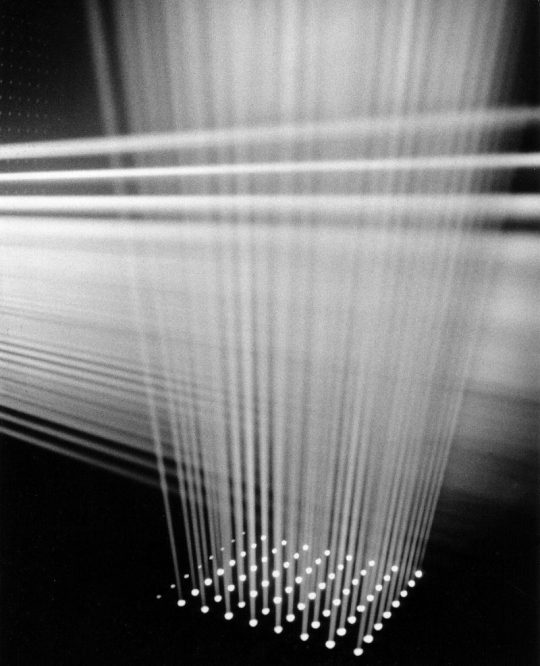
György Kepes (1906 - 2001)
_
The New Landscape in Art and Science, 1956. - Socks 2015
Book by the Hungarian-born artist, art theorist and educator taught along Laszlo Moholy-Nagy at the New Bauhaus school in Chicago and later was the founder of the Center for Advanced Visual Studies at the MIT, where he began working around the construction of a common language between science and visual art.
Kepes “attempted to present in pictures the new visual world revealed by science and technology, things that were previously too big or too small, too opaque or too fast for the unaided eye to see.”
https://socks-studio.com/2015/09/16/the-new-landscape-in-art-and-science-by-gyorgy-kepes/
https://monoskop.org/Gy%C3%B6rgy_Kepes
#György Kepes#Laszlo Moholy-Nagy#theory#visual communication#visual#Bauhaus#abstract#science#photography#micro#macro#pioneer#technology#Experimental#book
21 notes
·
View notes
Link
György László, az Innovációs és Technológiai Minisztérium gazdaságstratégiáért és -szabályozásért felelős államtitkára : “Magyarország lehagyja Németországot, az USA-t, Nagy-Britanniát, Dánián kívül az északi országokat és Ausztriát. Mindehhez kiszámítható befektetési környezet társul, ennek is köszönhető, hogy az utóbbi évek külföldi beruházásai egyre fejlettebb technológiákat hoztak hazánkba.”
6 notes
·
View notes
Text
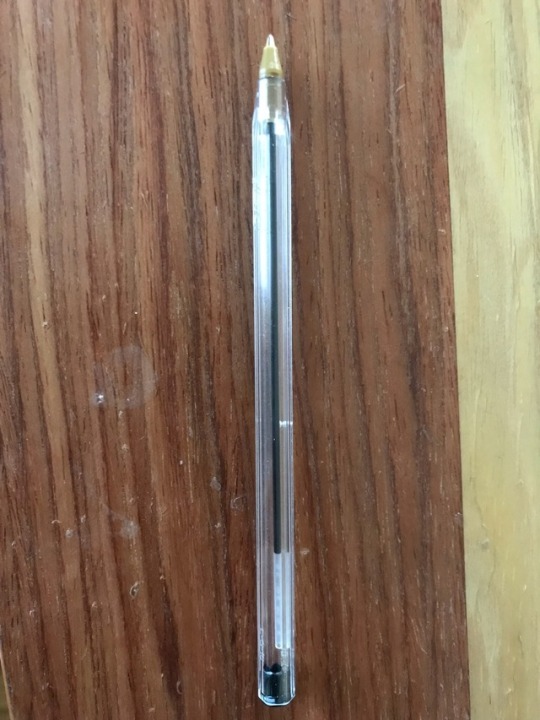
Joshua O’Neal
Intro to Anthropology
Feb 2, 2019
2. The pen was first manufactured by John j. Loud in 1888 in America. Due to the times it couldn’t efficiently be used to write until a Hungarian newspaper editor by the name is Laszlo Biro would attempt to have it dry quicker. He and his brother Gyorgy presented the first working model at Budapest in 1931. They would go on to Argentina to start their own pen company. After WW II multiple companies, namely Paper Mate and Martin Pen Company, began producing commercially successful pens.
3. Pens are manufactured in industrial buildings that incorporate the correct chemicals into the pens thus perfecting Laszlo’s idea to have them produce dry ink.
4. Pens have a grand impact on my life. I use them everyday for note taking and writing in general. They are also of great use in sending letters to places far away thus compressing time and space effectively.
5. Billions of people worldwide are effected by pens. Every second of every day someone is writing a letter, message, assignment, document, etcetera with pens and so life for these people is different depending on themselves. Obtaining a pen isn’t exclusive to a certain class nowadays so while some who use them do live harsher lives than others, there are those who live luxuriously too.
1 note
·
View note
Video
Photograph (132) Cyanotype by Russell Moreton
Via Flickr:
Alternative Photography Documents from research archive Tracing Light : Petworth House, West Sussex 2000 David Alan Mellor, Garry Fabian Miller. Light And The Genius Loci For Derrida, the sun not only marks the beginning of metaphoricity but it is also an inescapable reminder of the solar system and oscillations, hidings and occultrations, inherent in 'a certain history of the relationships; earth/sun inthe system of perception'. Mutations Of Light Petworth Window, 6 July 1999 Light's Windows And Rooms Passing towards the Invisible. The prospect of some metaphysical realm beyond the blue end of the spectrum and beyond material things illuminated to carnal sight, was a recurrent theme in William Henry Fox Talbot's early speculations. CATCHING THE LIGHT The entangled history of light and mind Arthur Zajonc BROUGHT TO LIGHT PHOTOGRAPHY AND THE INVISIBLE 1840-1900 Sight Unseen Picturing The Universe Corey Keller Invisible objects, penciled by nature's own hand. In his introduction to the exhibition catalogue Iconoclash: Beyond the Image Wars in Science, Religion, and Art, the historian of science Bruno Latour argues that scientific pictures are powerfully affective because they more than mere images; they are, as he puts it, the 'world itself'. The Social Photographic Eye Jennifer Tucker Nineteenth century science was characterized by both the appeal to visual evidence and the need for confirmation by the testimony of eyewitnesses. The latter explains why scientists pursued public viewings of their photographs by means of illustrated slide lectures, exhibitions, and reproduction in newspapers and magazines. An understanding of the social boundaries of nineteenth century science helps make sense of a certain paradox within contemporary attitudes towards photography of the invisible. The ideal of mechanical objectivity in documenting visual knowledge demanded the elimination of the artist-observer and all of the subjectivity implicit in drawing by hand. Invisible Worlds Visible Media Tom Gunning William Henry Fox Talbot, Slice of horse chestnut, seen through the solar microscope, 1840, salt print 18.6x22.5 cm. Techniques Of The Observer On Vision And Modernity In The Nineteenth Century Jonathan Crary The Camera Obscura and its Subject Above all it indicates the appearance of a new model of subjectivity, the hegemony of a new subject-effect. First of all the camera obscura performs an operation of individuation; that is, it necessarily defines an observer as isolated, enclosed, and autonomous within its dark confines. It impels a kind of askesis, or withdrawal from the world, in order to regulate and purify one's relation to the manifold contents of the now 'exterior' world. UNDER THE SUN By The Light Of The Fertile Observer Metaphors of illumination in the photography of Christopher Bucklow, Susan Derges, Garry Fabian Miller, and Adam Fuss. An Epiphany Of Light David Alan Mellor Christopher Bucklow , Guests Jeanette Winterson, Gut Symmetries Matter is provisional and that includes me. If the physics is correct then we are neither alive or dead as we commonly understand it, but in different states of potentiality. From The Adamantine Land Variations on the art of Christopher Bucklow David Alan Mellor Etienne-Jules Marey A Passion For The Trace Francois Dagognet Painting, Photography, Film Laszlo Moholy-Nagy A Bauhaus Book L. MOHOLY-NAGY: DYNAMIC OF THE METROPOLIS SKETCH FOR A FILM ALSO TYPOPHOTO OSKAR SCHLEMMER MAN Interaction of Color Josef Albers The Elements of Color Johannes Itten Pedagogical Sketchbook Paul Klee The New Landscape in art and science Gyorgy Kepes The Colour of Time Garry Fabian Miller The Majesty of Darkness Adam Nicolson The Unmade The Pregnant The Half Erotically Unmade Camera Obscura of Ideology Sarah Kofman An optical instrument, which used in drawing, allows one to see at the same time the objects being drawn and the paper. I Am Not This Body Barbara Ess
#Russell Moreton#visual art#visual fine art#spatial practice#research creation#ecology of experience#useless flickr uploader
1 note
·
View note
Photo

10 iunie: Ziua Pixului!
În iunie 1943, frații Laszlo and Gyorgy Biro audevenit posesorii patentului SUA nr. 2.390.636, patent al binecunoscutului, banalului pix, din zilele noastre.
https://www.diane.ro/2021/06/10-iunie-ziua-pixului.html
0 notes
Text
BALLPOINT PEN DAY

JUNE 10TH, IS NATIONAL BALLPOINT PEN DAY. A NATIONAL HOLIDAY FOR CELEBRATING SOMETHING WE ALL TAKE FOR GRANTED, THE SEEMINGLY SIMPLE BALLPOINT PEN. JUNE 10TH COMMEMORATES THE DAY IN 1943 THAT THE PATENT FOR THE BALLPOINT PEN WAS FILED. BEFORE THIS, IF YOU WANTED WRITE SOMETHING DOWN YOU NEEDED TO USE A QUILL, FOUNTAIN PEN OR PENCIL. NOWADAYS, BALLPOINT PENS ARE THE MOST COMMONLY USED WRITING INSTRUMENT. FOUNTAIN PENS LEAKED AND PENCILS SMEAR SO THE BALLPOINT PEN INTRODUCED A CLEANER METHOD OF WRITING. EVERY SINGLE DAY, MILLIONS OF BALLPOINT PENS ARE MANUFACTURED AND SOLD. BALLPOINT PENS DELIVER INK EVENLY WITHOUT CLOGGING OR OVERFLOWING. THE INVENTION OF THE BALLPOINT PEN IS CREDITED TO TWO BROTHERS, LASZLO AND GYORGY BIRO. TO THIS DAY, BALLPOINT PENS ARE SOMETIMES KNOWN AS BIROS. SO TAKE UP A BALLPOINT PEN AND DO SOME OLD-FASHIONED WRITING. WHETHER ITS A SHOPPING LIST OR POST-IT NOTE, YOU CAN'T GO WRONG WITH A BALLPOINT PEN. ON NATIONAL BALLPOINT PEN DAY, EVERYTHING IS COOL.
IF YOU HAVE NEVER USED THEM, OUR COOLNECKWEAR IT WILL HELP KEEP EVERYONE COOL & COMFORTABLE


THIS IS A COOLNECKWEAR THAT CAN BE USED DAILY OR IN SEASONAL CONDITIONS TO BE USED WITH YOUR EVENTS, FUNDRAISERS, UNIFORMS OR WITH YOUR EMPLOYEE STORE OR EVEN USED AS A RETAIL ITEM

WITH SUMMER AND GLOBAL CLIMATE CHANGE ITS USED TO HELP PREVENT HEAT ILLNESS IN THE WORK PLACE AS A SAFETY ITEM TO HELP KEEP A SOMEONE COOL AND ALERT

A PERSONAL RE USABLE COOLNECKWEAR
DON'T SHOW UP EMPTY HANDED WE HAVE COOL SAFETY PASS OUT ITEM THAT YOU CAN EVEN CO-OP AS A PROMOTIONAL ITEM

WITH THE COOLNECKWEAR YOU FOUND THE HELPFUL SAFETY ITEM FOR WORKER SAFETY OR ATHLETES IN THE HEAT. YOU HAVE AN ITEM THAT CAN HELP KEEP THE EMPLOYEES ALERT AND COOL WITH THE HEATED WORKING CONDITIONS. THIS IS REUSABLE AND CAN BE USED IN ANY ENVIRONMENT
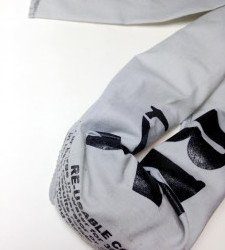
AFTER A COUPLE OF DAYS
THE COOLNECKWEAR WILL EVAPORATE IN SEVERAL USES OR DAYS OF USING THE COOLNECKWEAR.
A PERSONAL, REUSABLE COOLING DEVICE THAT WORKS BY RELEASING A SLIGHT AMOUNT OF MOISTURE ONTO YOUR SKIN. COOLING HAPPENS AS THE EVAPORATIVE PROCESS CONTINUES.

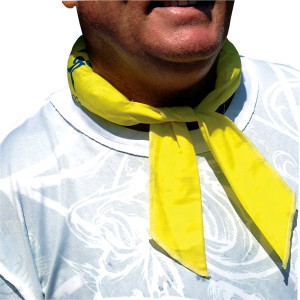
YOU ROTATE THE COOLNECKWEAR AROUND YOUR NECK OR FOREHEAD EVERY FIVE TO TEN MINUTES KEEPING YOU COOL. YOU CAN RECHARGE BACK TO JUST ABOVE FREEZING WITH ICE OR REFRIGERATION IN AS FAST AS 10 MINUTES DEPENDING ON HOW COLD YOU WANT TO GET THE COOLNECKWEAR.

PRINT UP TO 4 COLORS ON THE COLOR FABRIC OF YOUR CHOICE.
WE EVEN SUGGEST DOING CO-OPS WITH OTHER COMPANIES TO HELP IN KEEPING COSTS DOWN AND CROSS-MARKETING FOR MORE EXPOSURES
IF YOU USE YOUR COOLNECKWEAR IN INTERVALS, YOU WILL KEEP COOLER IN THE LONG-TERM. KEEPING YOU COOL AND ALERT, REFRESHED AND ENERGIZED.

Read the full article
#author#ballpoint#ballpoint.Pen#ballpoints#manuscript#natinalballpointpenday#Pen#pens#write#writes#writing
2 notes
·
View notes
Text
Tempesst-Music for Tempestuous Times
Oct 29, 2020
By Mossy Ross

Credit: Gyorgy Laszlo
Tempesst could be a band that’s one marijuana puff and a mushroom trip away from being a Ken Kesey novel. But they’re too smart for that. Maybe the rockstars of yore could stay up for days on end, free-lovin’ and festival-in,’ tripping balls for days on end. Or if we’re talking the 70s, snorting lines off of supermodels’ asses, and shooting up in the dingy downstairs bathrooms of, what are now, legendary music venues. But escapism is so last century. Now, the music venues have been replaced with condos. Our planet is facing extinction. Political unrest is threatening democracies. Social media is taking over our lives. And for many of us, a future with job security and healthcare is unlikely. But that isn’t stopping Tempesst. They’ve realized there’s nowhere to run, so might as well face the future head on…while still hanging on to what seemed like a much fun-ner past.
Tempesst’s dreamy new album, appropriately titled “Must Be a Dream,” makes existential crises seem romantic. Their flavor of rock is one of my favorite kinds…pretty. Tempesst shows us that the shitty parts of life don’t always have to lead to screaming anger, but that something beautiful can come out of asking the hard questions. Their retro style gives the modern problems they sing about a feeling of comforting nostalgia. Showing us that we can still slip on a polyester suit, get behind a Hammond organ, and rock out; while being honest about the terrifying future we face. Tempesst reminds us that if all else fails, we always have an analog world to go back to. And that might not be such a bad thing.
Before you read my chat with lead singer, Toma Benjamin, start going down the rabbit hole with Tempesst by watching their video for “Mushroom Cloud.” It not only has addictive visuals, but three of my favorite things: kitschy decor, a man in makeup, and a slammin’ saxophone solo.
youtube
Mossy: What’s your band’s history?
TB: The four of us, Blake, Cain, Andy, and I are from the same town in Australia. It’s a collection of towns. But the closest, most famous of the towns, is called Noosa. It’s a little beach town. So Cain, Andy, and I grew up with each other. But Blake’s actually about five years younger, so I met Blake because he lived three houses down the road. But it wasn’t until we were all in London, that we were just part of two groups that happened to come together, and all of these sorts of coincidences. I suppose when you move to a new city, for us coming all the way from Australia, you tend to find other people who have done the same thing. And then you bond, because you’ve got this similar experience of leaving home behind, and coming to this new city.
Mossy: What brought you to London?
TB: We were in New York, and we would’ve loved to stay in America. We were trying to get a visa to come stay in the states. And we got this business visa through my dad’s film distribution company. He distributes all the really bad B-grade films before the internet. People would actually buy the rights for them and distribute them across Australasia, which is pretty hilarious. This was in the 90s and 2000s. So we got a business visa to stay in the U.S., but you had to renew itall the time. So we renewed it once, and we tried to renew it again, but they wouldn’t let us. So we had to pack up all of our shit in thirty days and go back to Australia. And after growing up and spending all this time in this little coastal town in Australia, and then going to the complete opposite end of the spectrum, living in New York and experiencing the city and the energy, it was just too hard to stay home. So we lasted about three months and then we were like, “Well if we can’t go to New York, where else can we go?” So, not so very romantic (Laughs). It was for practical reasons. We could easily get a visa to come to London, and then we fell in love with the place after coming here.
Mossy: I always have to ask people from England or Australia who their influences are. I feel like there’s always such refined musical tastes coming from those two countries. Who were you listening to growing up?
TB: I’m a little bit of a late bloomer, to be honest. We grew up in quite a sheltered environment. Our families are quite religious. Myself and Andy grew up playing music in church. So it wasn’t until I left that world when I was about eighteen, that I started to learn about other artists. And I was really lucky to have a close friend who was actually playing with us in the original Tempesst, when we first started the band. And he’s a music lover and would spend all of his time listening to music from all over the place, and would just introduce us to some really great art. And then when I moved to New York, he also moved with me to New York. And I would say moving to New York introduced me to a lot of DIY bands like Yeasayer and Darwin Deez. When I was there, they were really big, and it was kind of the first time for me listening to that.
So getting into all the classic albums that I love now, that didn’t happen until well and truly in my twenties. And that was just because of my circumstance. But when I did start listening, it was just all the classics. I was just trying to catch up. Bob Dylan, Neil Young, Leonard Cohen, Jeff Buckley was one of my initial favorites. I still feel sometimes like I’m catching up. There’s just so much great music to consume, and not enough time to do it. And sometimes when you’re making music all day, the last thing you feel like doing is listening to music. So it’s kind of strange, I find myself listening to Talkback radio. I feel like I’m a 70 year-old man. (Laughs)
Mossy: What religion?
TB: Like Pentacostal, Christian. So yeah, I had some R&B gospel influences. My dad used to listen to George Benson, so I would try and mimic George Benson by playing guitar like George Benson, and singing the melodies with the guitar line. He might have listened to the odd Beatles song. But yeah, it wasn’t like my dad was listening to, like, really cool obscure records and introducing me to his favorite artists. He didn’t give a shit. (Laughs) He was listening to Christian music.
Mossy: I’m always surprised at how many rock musicians I talk to who grew up religious. I always assumed they would have had the cool dad who listened to obscure records, but a lot of them were sheltered and didn’t get to hear any of that. It’s almost like that upbringing helps you create a really original sound, because you didn’t have those influences around you when you were growing up.

Credit: Gyorgy Laszlo
Your sonic landscape matches your aesthetic. The way you present yourselves. Is that life imitating art, or art imitating life?
TB: I wouldn’t say there was any intention. I think there’s certain music you feel inspired by, and there’s certain fashion that you like, and it tends to be that all of these things come from that same world for us. I would also say that sonically, a lot of the equipment we use is old, vintage equipment. We’ve got vintage synths and our desk is a 1979 Neve console, and it sounds like an old school desk. So I think it just so happens that that’s the kind of music we’re into. We’re influenced by the artists that led us to have a think about what kind of instruments or gear we want, and it just naturally creates this specific sound.
Mossy: Why the extra “s” in Tempesst?
TB: We originally spelled Tempesst with one “s.” But soon after, we found that there was a 20-year old Celtic rock band that had the name already. When we started releasing music, Spotify started listing our music on their band page.
Mossy: Where did you shoot the video for “Mushroom Cloud?”
TB: An old workmens hall here around the corner in Islington. It’s a little hall that you can hire out, and we just thought it was funky and fit the vibe of the song.
Mossy: Tell me about your album cover.
TB: That was done by a guy named Jose Mendez. We basically sent the record out to a bunch of artists, and asked them to send us back what the sound of the album would look like. And Jose sent us back this sketch. The ways he was describing the songs felt like he really understood what we were trying to say. And then when he sent us the sketch, we all felt like it was really cool and trippy, and quite bold. And we wanted the music to feel quite bold and unpredictable. So I guess what we loved about it, was that it felt very bold and sort of random. Some of the ways he personified the characters in the songs were really cool.
Mossy: How would you describe the Age of the Bored (the title of a song off their new album)?
TB: I would describe it as insular. I would describe it as a waste. It was actually Eric that came up with the lyrical concept, and we wrote the lyrics together. I think the frustration came from life caught in the vacuum of this device that sits by our bedside, and in our pocket, in a holder in the car. It’s literally your entire life is linked to this device, and all of the things that distract you, and pull your attention away from the things you should be doing. It’s like a loud voice just demanding your attention. Binging with messages and fucking emails, and everything just taking you off your focus. When I come in to the studio now, I leave my phone in my pocket, hang my jacket up behind the door, and it sits there all day. Because otherwise you find that your whole life is ruled by this device. As opposed to it being something that serves you, it actually takes over. So the idea of that song was just choosing to separate yourself from it at times, and not have this symbiotic relationship with your mobile phone. Everything comes from this idea of not wanting to waste. That life is precious and we only have limited time.
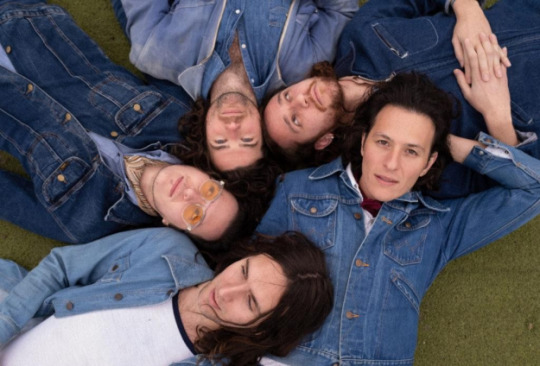
Credit: Gyorgy Laszlo
Mossy: I think it’s great when people who aren’t old, are telling people things that some people don’t realize unless they’re old. It takes a lot of self awareness to admit that this device gives you anxiety, and keeps you from being in the moment, and that you don’t have to have it by you all the time. I think it’s important for people to say that.
TB: One of my favorite lines in the whole record is in that song. It’s, “Offline, the new underground way to unwind.” How strange is it that, like, if you say to someone “I left my phone at home today,” they’re like, “What!? You have to go home!” It’s this bizarre idea that if you wanna unwind, if you wanna feel free, if you don’t wanna feel anxious, you don’t want to be ruled by this device and you leave your phone at home, people just freak out.
Mossy: It’s like a form of rebellion to leave your phone behind.
TB: Yeah, because we have lived in both worlds. So it’s like, you have the contrast. And it’s terrifying to think that at some point, if you have kids or whatever, that they’re gonna live in the world, and they won’t have that contrast. They won’t know what it’s like not to live with a mobile phone. It really will be a very different thing for someone to have that separation from their phone.
Mossy: “Is That All There Is?” also seems to have a message that speaks to a lot of people.
TB: I think again, it’s just another chance to talk about something that feels a little bit silly. That we aren’t always the best stewards of our time. That song’s probably more focused on a time of reflection. What happens is every year, I go back home for Christmas. And it’s a really strange time, because I have this contrast of leaving my busy life in London, and going back to this little beach town, and sitting on the beach. And I’m in this new environment, observing the people in that environment, reflecting on my year. And then the contrast always brings up these questions. For example in that song, “Is this it? Is this all we do? Just work our asses off all year?” And sometimes questioning even the whole creative process, and the creative lifestyle. And even questioning if that’s something that has merit. Does the world need more music? Does the world need another person trying to share their ideas? You’re grappling with this tension as an artist, wondering if the world needs any more fucking artists. (Laughs) There’s so much amazing music, you couldn’t possibly consume it all in one lifetime. And it’s also about just working out and reconciling with just growing up. That we’re not young forever. And we’ll have to, at some point, accept our mortality. And it’s that time when I go back to Australia, and I stop the busy-ness, and I’m sitting on the beach…that I get tormented with all these ideas. (Laughs)
Listen to “Must Be a Dream” on all streaming platforms or, better yet, buy it on vinyl.
2 notes
·
View notes
Text

LIVE -INTERVIU de Colecție-Sâmbātā, ne întālnim cu indrāgitul Actor Claudiu Bleonț-Teatrul Național București,in emisiunea Gândul Zilei alāturi de Eugen Târnovan!
Roluri la TNB:
Douglas - “Papagalul mut - Istorii aproape adevărate despre un spion aproape uitat”, text şi regie Nae Caranfil, 2018
Harry - "Orchestra Titanic" de Hristo Boicev, regia Felix Alexa, 2018
Puck - "Visul unei nopți de vară" de William Shakespeare, regia Petrică Ionescu, 2015
Militar, Bărbatul, Al treilea bărbat -"Terorism" de Frații Presniakov, regia Felix Alexa, 2015
Josef Erbarmen - "Hoți" de Dea Loher, regia Radu Afrim, 2014
Piotr Bobcinski, moșier - "Revizorul" de Nikolai Vasilievich Gogol, regia Felix Alexa, 2013
Iuri Petrovski - „Istoria comunismului povestită pentru bolnavii mintal", regia Florin Fătulescu, 2007
Maestrul de Arte Marţiale - „Burghezul gentilom" după J.B.P. Molière, regia Petrică Ionescu, 2006
Dr. Smil - „Apus de soare" de Barbu Ştefănescu Delavrancea, regia Dan Piţa, 2004
Andronic - „Ultima oră" de Mihail Sebastian, regia Anca Ovanez Doroşenco, 2003
Caţavencu - „O scrisoare pierdută" de I.L. Caragiale, regia Grigore Gonţa, 2003
Pafnutie - „Crimă pentru pământ" după romanul omonim al lui Dinu Săraru, regia Grigore Gonţa, 2003
Maestatea Sa - „Legenda ultimului împărat" de Valentin Nicolau, regia Alice Barb, 2002
Macbett - „Macbett" de Eugene Ionesco, regia Beatrice (Bleonţ) Rancea, 2000
Adso von Melk - „Numele trandafirului" după Umberto Eco, regia Grigore Gonţa, 1999
Ion Nebunu` - „Năpasta" de I.L. Caragiale, regia Dana Dima, 1998
Philoctet - „Philoctet" de Sofocle, regia Andreea Vulpe, 1998
Mercuţio - „Romeo şi Julieta" de William Shakespeare, regia Beatrice (Bleonţ) Rancea, 1994 - 1995
Pistetairos - „Păsările" de Aristofan, regia Nicky Wolcz, 1991
Feste, Nebunul - „Noaptea regilor" de William Shakespeare, regia Andrei Şerban, 1991
Trofimov - „Livada de vişini" de A. P. Cehov, regia Andrei Şerban, 1991
Reverend Hale - „Vrăjitoarele din Salem" de Arthur Miller, regia Felix Alexa, 1991
Oreste - „Trilogia Antică" după Seneca, Sofocle şi Euripide, regia Andrei Şerban, 1990
Ralph Clark - „Cine are nevoie de teatru? " de Timberlake Wartenbaker, regia Andrei Şerban, 1990
Scipio - „Caligula" de Albert Camus, regia Horea Popescu
Pamfilus / Byrria - „Fata din Andros" de Terenţiu, regia Grigore Gonţa
Tasso - „Torquato Tasso" de Johann Wolfgang von Goethe, regia Anca Ovanez Doroşenco, 1988
Billy Bibbit - „Zbor deasupra unui cuib de cuci" după Dale Wasserman, regia Horea Popescu, 1983
Sir Andrew - „A douăsprezecea noapte" de William Shakespeare, regia Anca Ovanez Doroşenco, 1983-1984 - Debut
Activităţi în afara TNB:
Roluri în teatru:
Teatrul Naţional Marin Sorescu, Craiova, 2012-2013
Tipătescu - "O scrisoare pierdută" de I.L. Caragiale, regia Mircea CornişteanuUmbra din Iad - "Apocalipsa după Shakespeare. Macbeth" după William Shakespeare şi Adam Mickiewicz, regia Janusz L. WisniewskiMircea Stephan - "Chinezii" de Michael Freyn, regia Mircea Cornişteanu
Teatrul Teodor Costescu, Drobeta Turnu Severin
Salieri - „Amadeus" de Peter Shaffer, regia Toma Enache, 2010Richard - "Richard al III-lea", regia Toma Enache
Centrul Cultural "Eugen Ionesco" Slatina, 2011-2012
Novecento - "Alessandro Barrico", regia Andra NegulescuDuhul - "Măgura" de George Smarandache, regia Andra NegulescuAmedee - «Amedeu sau sapi de el cu greu» după Eugen Ionesco, regia Andra Negulescu
Asociaţia Culturală de Teatru, Muzică şi Film "Dracula"
Fidipide - "Secta femeilor" după Aristofan, regia Toma Enache, 2010
Proiecte independente
Lelio Bisognosi - „Mincinosul" de Carlo Goldoni, regia Toma Enache, 2009-2010Gherman - „Aventurile unui bărbat extrem de serios" de Theodor Mazilu, regia Vlad Stănescu, 2009-2010
Teatrul de Comedie, Bucureşti: 2007 - 2009
„Vinerea Verde" de Dumitru Radu Popescu, regia Ion Eremia„Dumnezeul zilei de mâine" de Mimi Brănescu, regia Marcel Ţop
Asociaţia La Steaua, proiect independent: 2007 - 2008
Rică Venturiano - „O noapte furtunoasă" de I.L. Caragiale, regia Toma Enache
Teatrul Fani Tardini din Galaţi: 2007 - 2008
„Himnus" de Gyorgy Schwajda, în regia lui Radu Dinulescu„Caii de la fereastră" de Matei Vişniec, regia Radu Dinulescu
Teatrul Arca: 2004 - 2005
„Top Dogs. Şomeri de lux" de Urs Widmer, regia Theo Herghelegiu
ARCUB
„Uşa" de Matei Vişniec, regia Alice Barb, 2006
Teatrul Constantin Nottara
„Nu se ştie cum" de Luigi Pirandello, regia Bocsardi Laszlo, 2005
Teatrul de vară Zsambeck, Budapesta
Începând din 1995, a fost guest star în 5 spectacole montate în Ungaria de Beatrice Bleonţ în proiectele unice realizate pentru Festivalul de Teatru Ungar:
Woland - „Maestrul şi Margareta" după Mihail BulgakovOreste - „Electra" de SofocleAncus Marcius - „Răpirea sabinelor" de Leonid AndreevOberon - „Visul unei nopţi de vară" de William ShakespeareGrecul - „Nunta" de A.P. CehovQuasimodo - „Cocoşatul de la Notre Dame" de Victor HugoDoctorul - „Soldatul Pulcinella" după Georg Buchner, scenariul şi regia Simon Balasz, coproducţie italiano-ungaro-română, cu spectacole în Ungaria şi Italia, 2003 - 2004
Teatrul Naţional Târgu Mureş: 1997 - 1998
Macbeth - „Macbeth" de William Shakespeare, regia Ştefan Iordănescu
Teatrul Tineretului, Piatra Neamţ
Langlume - „Crima din strada Lourcine" de Eugene Labiche, regia Vlad Mugur
Teatrul Odeon: 1996 - 1998
Dr. Hinkfuss - „Asta seară se improvizează" de Luigi Pirandello, regia Alexa VisarionMackie Knife - „Opera de trei parale" de Bertolt Brecht, regia Beatrice Bleonţ
Teatrul Naţional Timişoara : 1996
Poetul - „Cerşetorul" de Reinhard Johannes Sorge, regia Beatrice (Bleonţ) Rancea
Teatrul Lucia Sturdza Bulandra: 1991
Moritz Stiefel - „Deşteptarea primăverii" de Frank Wedekind, regia Liviu Ciulei
Teatrul de Comedie: 1981-1982:
Kolea - „Turnul de fildeş" de Victor Rozov, regia Cătălina BuzoianuFugakawa - „Fantome la Kitahama" de Kobo Abe, regia Ion Cojar
Teatrul din Petroşani: 1983 - 1990 (Debut)
El - „Un bărbat şi mai multe femei" de Leonid Zorin, regia Claudiu BleonţEl - „Anonimul veneţian" de Giuseppe Berto, regia Cătălin NaumEl - „Într-un parc, pe o bancă" de Alexandr Ghelman, regia Cătălin Naum
Roluri în film:
"Brâncuşi", regia Adrian Popovici, 2013Marcelino - „Ursul", regia Dan Chişu, 2011Doctorul - "Eva", regia Adrian Popovici, 2009Mihai - "Liceenii...în 53 de ore şi ceva" , regia Adrian Popovici, 2011Col. Niculescu-Coca - "Călătoriile lui Grüber", regia Radu Gabrea, 2008Fabian - "Femeia visurilor", regia Dan Piţa, 2005Sergiu Naum - "Păcatele Evei", producţie Media Pro Pictures, serial tv,2005„Cortul", regia Bogdan Cristian Drăgan, 1997"Şarpele", regia Viorel Sergovici, film tv, 1996Cpt. Petre Dumitriu - „O vară de neuitat", regia Lucian Pintilie, 1994„Polul Sud", regia Radu Nicoară, 1991„Autor Anonim", regia Dan Piţa, 1989„Rochia albă de dantelă", regia Dan Piţa, 1989„Flăcări pe comori", regia Nicolae Mărgineanu, 1988„Dreptate în lanţuri", regia Dan Piţa, 1986„Pas în doi", regia Dan Piţa, 1986„Să mori rănit din dragoste de viaţă", regia Mircea Veroiu, 1984Băiatul - „Concurs", regia Dan Piţa, 1984
Roluri secundare în filme internaţionale:
Sorin - „Born to Raise Hell", cu Steven Segal, regia Lauro Chartrand, 2010Armon - "Anaconda 4: Trail of Blood", regia Don E. FauntLeRoy, film de televiziune, 2009Grigory Orloff - „Catherine the Great", regia Paul Burgess şi John-Paul Davidson, 2005Bogdan - „Dracula III", regia Patrick Lussier, 2005Aldo Serra - "Returns of the Living Dead: Rave to the Grave", regia Ellory Elkayem, 2005The Provider - „Dracula Ressurection", regia Patrick LoussierVlad II - „Vlad", regia Michael D. Sellers, 2003Ossac - „Boudica", regia Bill Anderson, BBC, 2003Andrei - „Ion", regia Thomas BohnHannibal - „Final Countdown", coproducţie Parafilm International şi ZDF Film (Germania), 2003Sultan Mahomed, Baiazid - „The Impaler" (Prinţul nopţii), regia Joe Sapel, 2000"Karoly", regia Arpad Sopsici, 1998
Televiziune:
Jacques - „Cum vă place" de William Shakespeare, regia Olimpia ArghirNae Girimea - „D`ale carnavalului", de I.L. Caragiale, regia Dominic DembinskiAndronic - „Şarpele" de Mircea Eliade, regia Viorel Sergovici
Festivaluri
„Himnus" de Gyorgy Schwajda, regia Radu Dinulescu - Avignon, 2007
„Caii la fereastră" de Matei Vişniec, regia Radu Dinulescu - Avignon, 2005 - 2006
Formaţie:
Institutul de Artă Teatrală şi Cinematografică I.L. Caragiale, Bucureşti, clasa profesor Grigore Gonţa, promoţia 1983. Roluri de absolvire: Ghiţă Coşcodan - „Agachi Flutur" de Vasile Alecsandri, regia Grigore Gonţa; Melchior Gabor - „Deşteptarea primăverii" de Frank Wedekind, regia Gina Guzina
Nominalizări şi premii:
Premiul presei „Coup de Coeur de la presse" la Festivalul de la Avignon 2007, secţiunea Off, pentru spectacolul "Himnus" de Gyorgy Schwajda, în regia lui Radu Dinulescu, Teatrul Fani Tardini din GalaţiPremiul pentru cel mai bun actor, Festivalul de Comedie, Galaţi, pentru „Caii la fereastră" de Matei Vişniec, regia Radu Dinulescu, 2006Nominalizare UNITER pentru cel mai bun actor pentru rolul Mercutio din „Romeo şi Julieta" de William Shakespeare, regia Beatrice Bleonţ, 1994 - 1995Nominalizare UNITER pentru cel mai bun actor pentru rolul Ion Nebunul din „Năpasta" de I.L. Caragiale, regia Radu Dinulescu, 1992 - 1993Premiu pentru cel mai bun actor pentru rolul Tasso în „Torquato Tasso" de Johann Wolfgang van Goethe, regia Anca Ovanez Doroşenco, TNBPremiul pentru cel mai bun actor în filmul „Pas în doi", regia Dan Piţa, Costineşti 1985Premiul pentru cel mai bun actor în filmul „Concurs", regia Dan Piţa, Costineşti, 1983Premiul pentru cel mai bun actor pentru rolul El din piesa „Un bărbat şi mai multe femei", Teatrul Petroşani, regia proprie
Distincții :
Ordinul Meritul Cultural în grad de Cavaler, Categoria D - "Arta Spectacolului", „în semn de apreciere a întregii activități și pentru dăruirea și talentul interpretativ pus în slujba artei scenice și a spectacolului”
Diplomă de onoare acordată de Asociația Cineaștilor din România (ACIN) pentru rolurile sale din filmele Să mori rănit din dragoste de viață și Dreptate în lanțuri (1984).
#TeleviziuneaGrupIubimBrasovul
#GândulZilei
#ClaudiuBleonț
#TNB
#IUBIM_BRAŞOVUL
0 notes
Photo

Ballpoint Pen Day - 10th June.
This particular day commemorates the ballpoint pen and marks the anniversary of the patent filing on June 10, 1943.
Brothers Laszlo and Gyorgy Biro invented the#ballpointpen and obtained a patent in June of 1943.
0 notes